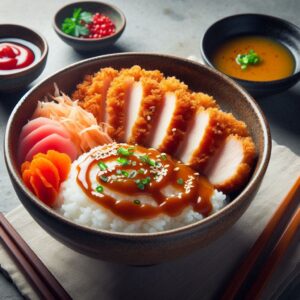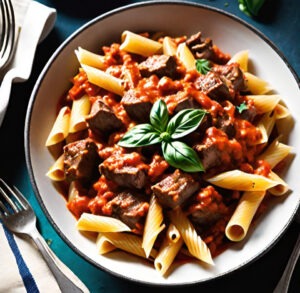Master Chef’s Beef Stroganoff: A Complete Guide
The Art of Elevated Comfort Food
When winter evenings call for something indulgent, few dishes satisfy like a perfectly executed beef stroganoff. This Russian-inspired classic has captured hearts worldwide, but achieving restaurant-quality results at home often feels challenging. The secret lies in understanding proper technique and ingredient selection – transforming simple components into an extraordinary dining experience that balances rich, creamy textures with tender, flavorful beef.
Essential Ingredients for Success
Creating an exceptional stroganoff requires careful ingredient selection:
For the Meat and Base:
- 1.5 lbs premium beef (tenderloin or ribeye), cut into uniform strips
- 2 tbsp extra virgin olive oil
- 2 tbsp quality unsalted butter
- 2 large yellow onions, thinly sliced
- 3 fresh garlic cloves, finely minced
For the Mushroom Component:
- 1 lb mixed mushrooms (cremini and wild varieties), freshly sliced
- 3 tbsp premium brandy or cognac
- 1 tbsp whole grain Dijon mustard
- 1 tbsp Hungarian sweet paprika
For the Sauce:
- 1 cup rich beef stock (preferably homemade)
- 1 cup full-fat sour cream, room temperature
- 2 tbsp fresh Italian parsley, finely chopped
- Sea salt and cracked black pepper to taste
Smart Substitutions: Budget-conscious cooks can use sirloin instead of tenderloin while maintaining excellent results. Button mushrooms work well if specialty varieties aren’t available, and Greek yogurt can replace sour cream for a lighter alternative.
Time Investment and Planning
Preparation Phase: 20 minutes (efficient mise en place is key) Active Cooking: 35 minutes Total Duration: 55 minutes
This streamlined approach delivers gourmet results faster than traditional methods, making it perfect for both weeknight dinners and special occasions.
The Cooking Process Mastered
Phase 1: Beef Preparation and Searing
Begin by bringing your beef to room temperature and seasoning generously with salt and pepper. Heat olive oil in a heavy-bottomed skillet until it shimmers and begins to smoke. Working in small batches to avoid overcrowding, sear beef strips for 45-60 seconds per side, creating a beautiful caramelized exterior while keeping the interior pink. Remove immediately and set aside under loose foil.
Pro Tip: The brief, high-heat searing locks in juices while preventing the meat from becoming tough during the final assembly.
Phase 2: Building the Aromatic Foundation
Using the same pan with all those flavorful drippings, reduce heat to medium and add butter. Once melted and foaming, introduce the sliced onions. Cook patiently for 4-5 minutes until they become translucent and sweet. Add minced garlic and cook just until fragrant – about 30 seconds more.
Phase 3: Mushroom Magic
Raise the heat slightly and add your mushrooms to the aromatic base. The key here is restraint – let them sit undisturbed for the first 2-3 minutes to develop proper caramelization. Then stir and continue cooking for 6-8 minutes until they’re golden brown and their moisture has completely evaporated. This patience pays dividends in flavor development.
Phase 4: Deglazing for Depth
Pour in the brandy and immediately scrape up all those beautiful brown bits from the pan bottom using a wooden spoon. Allow the alcohol to reduce by half – you’ll know it’s ready when the sharp alcohol aroma mellows into something rich and complex.
Phase 5: Sauce Development
Stir in the Dijon mustard and paprika, ensuring even distribution throughout the mushroom mixture. Pour in the beef stock and bring to a gentle simmer. Let this reduce by approximately one-third over 6-8 minutes, stirring occasionally to prevent sticking.
Phase 6: The Creamy Finish
This is the critical moment that separates amateur from professional results. Reduce heat to the lowest setting and slowly incorporate the room-temperature sour cream, stirring constantly. Return the seared beef and any accumulated juices to the pan, folding gently to coat everything in the silky sauce. Warm through for just 1-2 minutes – never allow it to boil, as this will cause the sauce to break and the meat to toughen.
Phase 7: Final Presentation
Taste and adjust seasoning as needed. Garnish with fresh parsley and serve immediately over your chosen accompaniment.
Nutritional Profile
Per generous serving (excluding sides):
- Calories: 435
- Protein: 34g
- Total Fat: 26g
- Carbohydrates: 8g
- Fiber: 2g
- Sodium: 520mg
This recipe provides significantly more protein than typical restaurant versions while containing less sodium than commercial preparations.
Healthier Variations
Transform this indulgent dish into a lighter option:
- Protein Swap: Use lean sirloin or turkey strips for 35% less fat
- Dairy Alternative: Greek yogurt reduces calories by 25% while maintaining creaminess
- Vegetable Boost: Double the mushrooms and reduce meat by one-quarter for more plant-based nutrition
- Cooking Method: Use cooking spray instead of oil and butter to minimize added fats
- Carb Alternatives: Serve over cauliflower rice or spiralized vegetables for low-carb dining
Perfect Pairings and Presentation
Elevate your stroganoff experience with thoughtful accompaniments:
Classic Presentations:
- Buttered egg noodles or fresh tagliatelle pasta
- Creamy mashed potatoes or crispy potato rösti
- Steamed rice pilaf with herbs
Complementary Sides:
- Crisp green salad with lemon vinaigrette to cut through richness
- Pickled vegetables for acidic contrast
- Crusty artisan bread for sauce enjoyment
Wine Selections: Medium-bodied reds like Pinot Noir or Merlot complement the earthy mushroom flavors perfectly.
Avoiding Common Pitfalls
Master this dish by steering clear of these frequent mistakes:
Meat Mishaps: Overcooking beef is the most common error. Quick searing followed by gentle reheating preserves tenderness.
Sauce Separation: Adding cold sour cream to hot sauce causes breaking. Always use room-temperature dairy and keep heat low.
Mushroom Errors: Pre-sliced mushrooms contain excess moisture and lack flavor intensity. Always slice fresh mushrooms yourself.
Timing Issues: Rushing the mushroom caramelization results in poor flavor development. Patience during this step is essential.
Temperature Problems: Cold meat straight from refrigeration doesn’t sear properly, affecting final texture.
Storage and Meal Planning
Immediate Storage: Refrigerate leftovers within two hours in airtight containers.
Shelf Life: Properly stored stroganoff keeps 3-4 days refrigerated, often improving in flavor overnight.
Reheating Method: Warm gently on stovetop over low heat, adding beef stock if needed to restore sauce consistency.
Freezing Options: Sauce freezes well for up to 2 months when stored separately from pasta or rice.
Meal Prep Strategy: Prepare components separately and combine just before serving for optimal texture.
Professional Tips for Success
The difference between good and exceptional stroganoff lies in attention to detail:
Temperature Control: Room-temperature ingredients integrate more smoothly Knife Work: Uniform beef strips ensure even cooking Pan Selection: Heavy-bottomed skillets distribute heat evenly Timing: Proper sequencing prevents overcooking while building flavors Quality Ingredients: Premium beef and fresh mushrooms make a noticeable difference
Frequently Asked Questions
Q: What’s the best beef cut for stroganoff? A: Tenderloin offers the ultimate tenderness, though well-trimmed ribeye or sirloin provide excellent results at lower cost.
Q: Can this be prepared in advance? A: Absolutely. Prepare everything except the sour cream addition, refrigerate, then reheat gently and finish with cream just before serving.
Q: How do I prevent sauce separation? A: Use room-temperature sour cream, keep heat low when adding it, and never allow the mixture to boil once cream is incorporated.
Q: What if I don’t have brandy? A: Substitute with beef stock mixed with a splash of balsamic vinegar for similar depth of flavor.
Q: Why does my beef turn out tough? A: Three factors ensure tenderness: room-temperature meat before cooking, cutting against the grain, and minimal cooking time with high heat for searing.
Conclusion
Mastering this elevated beef stroganoff transforms a simple comfort food into a restaurant-worthy centerpiece that impresses without intimidating. The key lies in understanding each component’s role and executing proper technique rather than rushing through steps. With quality ingredients and careful attention to timing, this dish delivers the perfect balance of rich, creamy indulgence and tender, flavorful meat.
Whether planning a special dinner party or seeking to elevate a weeknight meal, this stroganoff recipe provides the foundation for culinary success. The techniques learned here apply to countless other dishes, making this both a destination recipe and a stepping stone to greater cooking confidence.







